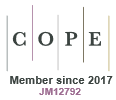Just Accepted
This article has been peer reviewed and accepted for publication. It is in production and has not been edited, so may differ from the final published form.
A preliminary investigation of the potential of an all-weather satellite to discriminate dual-purpose crops
Abstract
Context. The application of optical satellite data for crop management is not uncommon in Australia. However, considerable cloud cover during winter or wet season limits the utility of optical satellite data for monitoring winter dual-purpose crops. Synthetic Aperture Radar (SAR) overcomes this shortcoming of optical remote sensing by self-emitting microwave energy that penetrates clouds. However, using satellite-based SAR for dual-purpose crop management in Australia is under-explored because of low knowledge and skills in interpreting SAR data. Aims. This study aimed to employ foundational and easy-to-interpret SAR methods evaluating the potential of Sentinel-1 SAR for discriminating between wheat and canola fields in a mixed cropping system. Methods. We used field-measured canola and wheat biomass data and Sentinel-1 ground range detected imagery to explore the correlation between wheat and canola biomass and backscattering coefficients using maps, Wilcoxon’s rank-sum test, and Spearman’s rank correlation test. Key results. The cross-polarised backscatter was positively linearly correlated with canola biomass (R = 0.74, p = 4.8e-05), while the wheat biomass negatively correlated with the backscatter associated with the co-polarisation channel (R = -0.44, p = 0.046). Conclusions. Publicly available free-to-use Sentinel-1 SAR tracks wheat and canola productivity. Implications. Using earth observation satellites, SAR can be used alone or combined with optical data to map crop types, phenology, and productivity reliably. This could guide the timing of management inputs such as crop irrigation and applying pesticides and fertilisers.
CP24225 Accepted 13 October 2025
© CSIRO 2025



